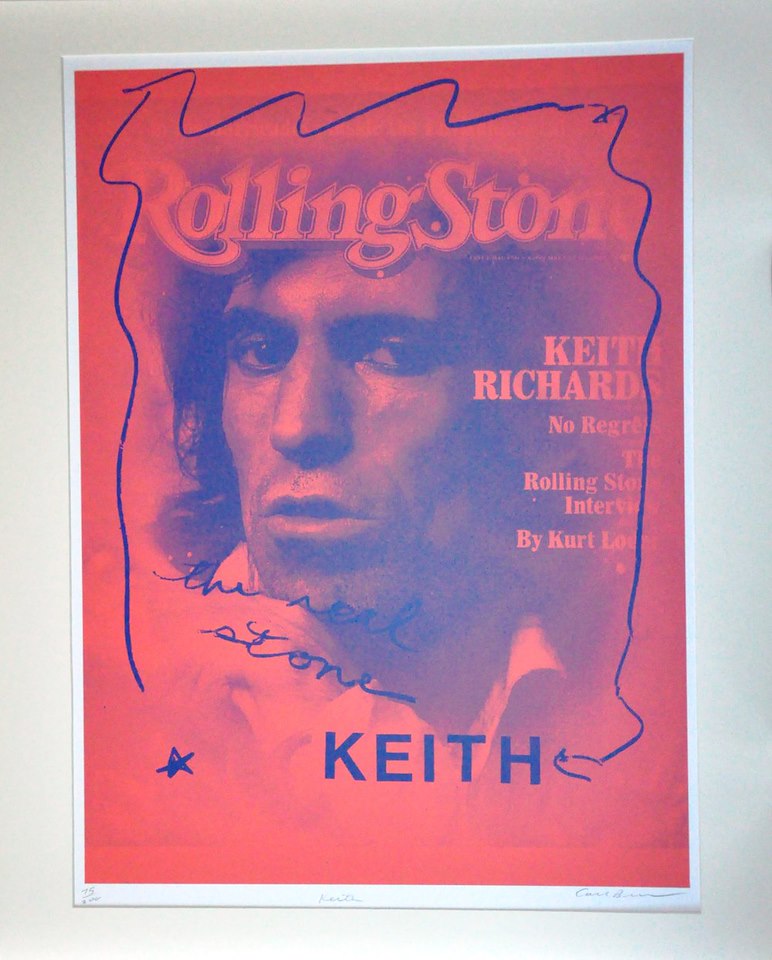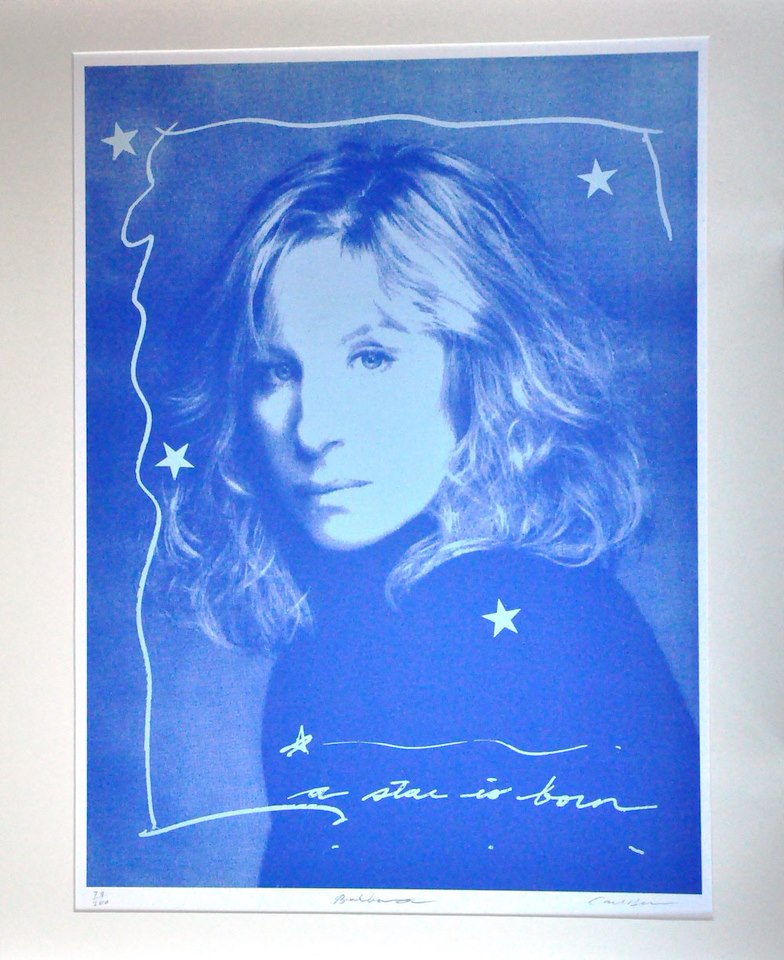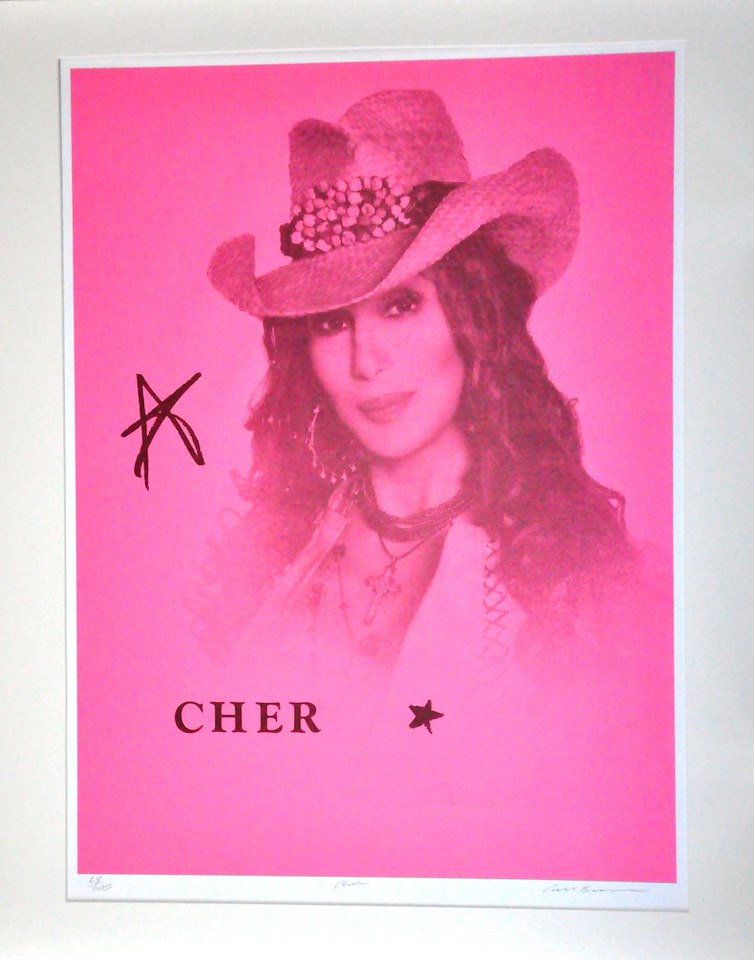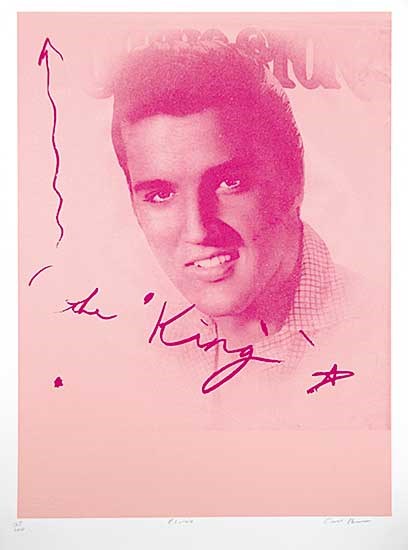Indigenous Art On Campus

Bear & Seal (1969)
About the artist:
Helen Kalvak
"Helen Kalvak (1901-1984) was an Inuinnait graphic artist from Ulukhaktok, NWT. She was born at Tahiryuak Lake, Victoria Island, and moved to Ulukhaktok in 1960, where she began making drawings and helped establish the Holman Eskimo Co-operative. Through her art, she chronicled the traditional lives of the Inuinnait, as well as Inuit oral histories. She was a prolific artist, making more than 1,800 drawings over her life. Between 1965 and 1985, 154 of her drawings were made into prints included in the annual Holman Island print releases, the largest body of published work by an Ulukhaktok artist. Her work is found in many prominent public collections, including the National Gallery of Canada, Canadian Museum of History and Winnipeg Art Gallery. She was inducted into the Royal Canadian Academy of Arts in 1975 and appointed to the Order of Canada in 1978."
Location: UBC Okanagan Library First Floor Lib 106B

Caribou Feeding Their Fawn (1970)
About the artist:
Helen Kalvak
"Helen Kalvak (1901-1984) was an Inuinnait graphic artist from Ulukhaktok, NWT. She was born at Tahiryuak Lake, Victoria Island, and moved to Ulukhaktok in 1960, where she began making drawings and helped establish the Holman Eskimo Co-operative. Through her art, she chronicled the traditional lives of the Inuinnait, as well as Inuit oral histories. She was a prolific artist, making more than 1,800 drawings over her life. Between 1965 and 1985, 154 of her drawings were made into prints included in the annual Holman Island print releases, the largest body of published work by an Ulukhaktok artist. Her work is found in many prominent public collections, including the National Gallery of Canada, Canadian Museum of History and Winnipeg Art Gallery. She was inducted into the Royal Canadian Academy of Arts in 1975 and appointed to the Order of Canada in 1978."
Location: UBC Okanagan Library First Floor Lib 106B
Image source: UBC Okanagan Gallery’s Public Art Collection

Surprise (Bear & Bird) (1973)
About the artist:
Helen Kalvak
"Helen Kalvak (1901-1984) was an Inuinnait graphic artist from Ulukhaktok, NWT. She was born at Tahiryuak Lake, Victoria Island, and moved to Ulukhaktok in 1960, where she began making drawings and helped establish the Holman Eskimo Co-operative. Through her art, she chronicled the traditional lives of the Inuinnait, as well as Inuit oral histories. She was a prolific artist, making more than 1,800 drawings over her life. Between 1965 and 1985, 154 of her drawings were made into prints included in the annual Holman Island print releases, the largest body of published work by an Ulukhaktok artist. Her work is found in many prominent public collections, including the National Gallery of Canada, Canadian Museum of History and Winnipeg Art Gallery. She was inducted into the Royal Canadian Academy of Arts in 1975 and appointed to the Order of Canada in 1978."
Location: UBC Okanagan Library First Floor
Image source: UBC Okanagan Gallery’s Public Art Collection

Cax̌alqs (Red Dress)
Artist Statement: As a Syilx artist I have always sought to use my art as a catalyst for discussion, to create spaces where uncomfortable issues can be brought forward into the societal dialogue to be given a voice. As an artist I always take the opportunity to use my platform as a vessel for change. For me art can be a educational tool, a conversational opening, as well as a political weapon. The canvas highlights the times we are in, the mask speaks to the time of pandemic which in some cases has been seen as a symbol of the “oppression” society is experiencing, but here we see the indigenous woman wearing a mask and is still very much standing strong and in her power showing that the mask in this instance does not hinder her strength or resolve. The elk teeth on the red dress is a symbol of her deeply rooted and celebrated importance and worth in indigenous society. The Red Dress is a symbol for the MMIW2 movement. The feeling this canvas evokes is an unwavering sense of strength. By placing this image out into the public area of the campus and its buildings it gives voice and hopefully a sense that the issues and concerns and spirits of our women will not be silenced and will not go unnoticed. It is my hope that the women on campus will feel represented and heard, that their voices and worth will be acknowledged. For the men on campus I hope this creates space for them to have the discussions about their roles in supporting and addressing the issue of MMIW2, as well to hold other men accountable for their actions in perpetuating these actions towards our indigenous women. For the faculty it is my hopes that these types of indigenous issues will find a place in the classrooms and staff rooms and will not be kept out because of its uncomfortable and genocidal overtones, so that we can educate the young minds who are going out into the world to hopefully help push and support indigenous issues in circles that our indigenous peoples are not part of.
About the artist:
Sheldon Louis
"Sheldon Pierre Louis, a member of the Okanagan/Syilx Nation, is a multi disciplinary Okanagan/Syilx Artist. Sheldon’s ancestral roots have influenced his works in painting, drawing, carving, and sculpting. Sheldon sits on the board of directors for the Arts Council of the North Okanagan in his second term as well sits at the Board for the Greater Vernon Museum and Archives. His work has been published in the Arts and Council Guide for the North Okanagan 2016 and 2017. Sheldon is a recipient of the First Peoples Cultural Council’s, Emerging Artist Development Award for 2015. He is a co-founder and the lead visual artist of the Kama? Creative Aboriginal Arts Collective & is a member of Ullus Collective, both groups based in Syilx Art. As a member of the Re-Think 150: Indigenous Truth Collective Sheldon has worked on a youth mural in conjunction with the Kelowna Secondary School’s Honours Art 12 class."
–– Nelson District Arts Council
Image source: UBC Okanagan Gallery’s Public Art Collection

Tug o' War (2006)
About the artist:
Cherie Stocken
"Cherie Valentina Stocken is from the Cree/Ojibway Nations. She is also English, French and German. Stocken's video/performance work deals with issues of cultural convergence and the individual identity. She has received her BFA from the University of British Columbia and has screened both nationally and internationally. Some venues include imagineNATIVE Film and Media Arts Festival (Toronto), Images Festival (Toronto), Dreamspeakers International Aboriginal Film and Television Festival (Edmonton) and NURTUREART Non Profit Inc.(New York). She has exhibited at the Alternator Gallery for Contemporary Art, Carleton University Art Gallery, Arusha Center and UBC Okanagan. She received the CanWest Global Centre for the Artists' Video Award and the Faculty of Creative and Critical Studies Purchase Award. Her work can be found in the UBC Okanagan, Queen's University, and the University of Oklahoma Art Collections. It is Cherie’s goal to continue to inspire social change throughout her art career."
–– V Tape
Location: UBC Okanagan Engineering, Management and Education Building First Floor across from EME 1165
Image source: UBC Okanagan Gallery’s Public Art Collection

Spirit Horse and Ride (2013)
About the artist:
David Wilson Sookinakin
"David Wilson Sookinakin learned through teachings and mentorship of Coast Salish and Haida artists and later began exploration of West Coast and Plains First Nations’ art forms and furthered his studies in business at Vancouver’s Langara College. He has since produced various forms of acrylic pieces on a large variety of mediums. His style of painting has developed through exploring Interior Salish pictograph art form, combining vibrant colours and linear forms within a circular picture format. Wilson brings together many years of evolving unique styles of form and technique, with the use of acrylics on 5.5 traditional canvas as well as community murals, traditional drums and canoes, prints, teepees, and various mediums on brushed metal."
Image source: UBC Okanagan Gallery’s Public Art Collection

Sylix Territory Study (2016)
About the artist:
David Wilson Sookinakin
"David Wilson Sookinakin learned through teachings and mentorship of Coast Salish and Haida artists and later began exploration of West Coast and Plains First Nations’ art forms and furthered his studies in business at Vancouver’s Langara College. He has since produced various forms of acrylic pieces on a large variety of mediums. His style of painting has developed through exploring Interior Salish pictograph art form, combining vibrant colours and linear forms within a circular picture format. Wilson brings together many years of evolving unique styles of form and technique, with the use of acrylics on 5.5 traditional canvas as well as community murals, traditional drums and canoes, prints, teepees, and various mediums on brushed metal."
Image source: UBC Okanagan Gallery’s Public Art Collection

Northern Lights (2012)
About the artist:
David Wilson Sookinakin
"David Wilson Sookinakin learned through teachings and mentorship of Coast Salish and Haida artists and later began exploration of West Coast and Plains First Nations’ art forms and furthered his studies in business at Vancouver’s Langara College. He has since produced various forms of acrylic pieces on a large variety of mediums. His style of painting has developed through exploring Interior Salish pictograph art form, combining vibrant colours and linear forms within a circular picture format. Wilson brings together many years of evolving unique styles of form and technique, with the use of acrylics on 5.5 traditional canvas as well as community murals, traditional drums and canoes, prints, teepees, and various mediums on brushed metal."
Image source: UBC Okanagan Gallery’s Public Art Collection

Traffic (2001)
About the artist:
Carl Beam
"Carl Beam (1943 - 2005) is an artist who works in a variety of media to explore the tensions between Western and Indigenous relations. In his autobiographical work, he references himself as an Ojibwa, and places his Native culture within broader surroundings. He brings to attention problems that affect contemporary Native cultures and shows, through his juxtaposition of images, how these concerns relate to larger world issues. Through his work Beam integrates personal memory with issues related to the environment, brutality, and a rethinking of the ways histories are told."
Image source: UBC Okanagan Gallery’s Public Art Collection

Family (2000)
About the artist:
Carl Beam
"Carl Beam (1943 - 2005) is an artist who works in a variety of media to explore the tensions between Western and Indigenous relations. In his autobiographical work, he references himself as an Ojibwa, and places his Native culture within broader surroundings. He brings to attention problems that affect contemporary Native cultures and shows, through his juxtaposition of images, how these concerns relate to larger world issues. Through his work Beam integrates personal memory with issues related to the environment, brutality, and a rethinking of the ways histories are told."
Image source: UBC Okanagan Gallery’s Public Art Collection

John Lennon (2000)
About the artist:
Carl Beam
"Carl Beam (1943 - 2005) is an artist who works in a variety of media to explore the tensions between Western and Indigenous relations. In his autobiographical work, he references himself as an Ojibwa, and places his Native culture within broader surroundings. He brings to attention problems that affect contemporary Native cultures and shows, through his juxtaposition of images, how these concerns relate to larger world issues. Through his work Beam integrates personal memory with issues related to the environment, brutality, and a rethinking of the ways histories are told."
Image source: UBC Okanagan Gallery’s Public Art Collection

Keith (2000)
About the artist:
Carl Beam
"Carl Beam (1943 - 2005) is an artist who works in a variety of media to explore the tensions between Western and Indigenous relations. In his autobiographical work, he references himself as an Ojibwa, and places his Native culture within broader surroundings. He brings to attention problems that affect contemporary Native cultures and shows, through his juxtaposition of images, how these concerns relate to larger world issues. Through his work Beam integrates personal memory with issues related to the environment, brutality, and a rethinking of the ways histories are told."
Image source: UBC Okanagan Gallery’s Public Art Collection

Barbara (2001)
About the artist:
Carl Beam
"Carl Beam (1943 - 2005) is an artist who works in a variety of media to explore the tensions between Western and Indigenous relations. In his autobiographical work, he references himself as an Ojibwa, and places his Native culture within broader surroundings. He brings to attention problems that affect contemporary Native cultures and shows, through his juxtaposition of images, how these concerns relate to larger world issues. Through his work Beam integrates personal memory with issues related to the environment, brutality, and a rethinking of the ways histories are told."
Image source: UBC Okanagan Gallery’s Public Art Collection

Celine (2001)
About the artist:
Carl Beam
"Carl Beam (1943 - 2005) is an artist who works in a variety of media to explore the tensions between Western and Indigenous relations. In his autobiographical work, he references himself as an Ojibwa, and places his Native culture within broader surroundings. He brings to attention problems that affect contemporary Native cultures and shows, through his juxtaposition of images, how these concerns relate to larger world issues. Through his work Beam integrates personal memory with issues related to the environment, brutality, and a rethinking of the ways histories are told."
Image source: UBC Okanagan Gallery’s Public Art Collection

Cher (2001)
About the artist:
Carl Beam
"Carl Beam (1943 - 2005) is an artist who works in a variety of media to explore the tensions between Western and Indigenous relations. In his autobiographical work, he references himself as an Ojibwa, and places his Native culture within broader surroundings. He brings to attention problems that affect contemporary Native cultures and shows, through his juxtaposition of images, how these concerns relate to larger world issues. Through his work Beam integrates personal memory with issues related to the environment, brutality, and a rethinking of the ways histories are told."
Image source: UBC Okanagan Gallery’s Public Art Collection

Elvis (2001)
About the artist:
Carl Beam
"Carl Beam (1943 - 2005) is an artist who works in a variety of media to explore the tensions between Western and Indigenous relations. In his autobiographical work, he references himself as an Ojibwa, and places his Native culture within broader surroundings. He brings to attention problems that affect contemporary Native cultures and shows, through his juxtaposition of images, how these concerns relate to larger world issues. Through his work Beam integrates personal memory with issues related to the environment, brutality, and a rethinking of the ways histories are told."
Image source: UBC Okanagan Gallery’s Public Art Collection

Albert in the Blue Zone (1998)
About the artist:
Carl Beam
"Carl Beam (1943 - 2005) is an artist who works in a variety of media to explore the tensions between Western and Indigenous relations. In his autobiographical work, he references himself as an Ojibwa, and places his Native culture within broader surroundings. He brings to attention problems that affect contemporary Native cultures and shows, through his juxtaposition of images, how these concerns relate to larger world issues. Through his work Beam integrates personal memory with issues related to the environment, brutality, and a rethinking of the ways histories are told."
Image source: UBC Okanagan Gallery’s Public Art Collection

National Geographic (2000)
About the artist:
Carl Beam
"Carl Beam (1943 - 2005) is an artist who works in a variety of media to explore the tensions between Western and Indigenous relations. In his autobiographical work, he references himself as an Ojibwa, and places his Native culture within broader surroundings. He brings to attention problems that affect contemporary Native cultures and shows, through his juxtaposition of images, how these concerns relate to larger world issues. Through his work Beam integrates personal memory with issues related to the environment, brutality, and a rethinking of the ways histories are told."
Image source: UBC Okanagan Gallery’s Public Art Collection

Sewn with Cotton Thread (2015)
About the artist:
Jordan Bennett
"Jordan Bennett is a Mi’kmaq visual from Stephenville Crossing, Ktaqamkuk (Newfoundland). He lives and works on his ancestral territory of Mi’kma’ki in Terence Bay, Nova Scotia with his partner in life and art Amy Malbeuf. Jordan's ongoing practice utilizes painting, sculpture, video, installation and sound to explore land, language, the act of visiting, familial histories and challenging colonial perceptions of indigenous histories and presence with a focus on exploring Mi’kmaq and Beothuk visual culture of Ktaqamkuk."
Image source: UBC Okanagan Gallery’s Public Art Collection

A Band of Bark (2015)
About the artist:
Jordan Bennett
"Jordan Bennett is a Mi’kmaq visual from Stephenville Crossing, Ktaqamkuk (Newfoundland). He lives and works on his ancestral territory of Mi’kma’ki in Terence Bay, Nova Scotia with his partner in life and art Amy Malbeuf. Jordan's ongoing practice utilizes painting, sculpture, video, installation and sound to explore land, language, the act of visiting, familial histories and challenging colonial perceptions of indigenous histories and presence with a focus on exploring Mi’kmaq and Beothuk visual culture of Ktaqamkuk."

Gut Instincts
About the artist:
Tania Willard
"Tania Willard, Secwepemc Nation, works within the shifting ideas of contemporary and traditional as it relates to cultural arts and production.Often working with bodies of knowledge and skills that are conceptually linked to her interest in intersections between Aboriginal and other cultures. Willard has worked as a curator in residence with grunt gallery and Kamloops Art Gallery. Willard’s curatorial work includes Beat Nation: Art Hip Hop and Aboriginal Culture, a national touring exhibition first presented at Vancouver Art Gallery in 2011. As assistant professor in Creative Studies at UBCO (Kelowna BC) currently her research focuses on Secwepemc aesthetics/language/land and interrelated Indigenous art practices. Willard’s projects include BUSH gallery, a conceptual space for land based art and action led by Indigenous artists."
Image source: UBC Okanagan Gallery’s Public Art Collection

I Spy (2012)
About the artist:
Sheena Gibson
"Born in Inuvik, NWT and raised in Kelowna, BC Sheena Gibson pursued a BFA from the University of British Columbia Okanagan after initially falling in love with art in high school. Impressionist painters and artists such as Marc Chagall inspire Gibson’s whimsical work that is focused lovingly on Inuvialuit life and culture.
“I like to paint people because we can relate to that, but I like to paint animals as well,” she says, “It’s not like they can paint themselves! But they deserve to be portrayed in our art.” [1]
An ambitious artist, her work can often reach dimensions of up to 6x7ft, painted on wooden frames constructed for her by her father. Although painting now forms the core of Gibson’s artistic practice, she has also worked in photography and carving."
Image source: UBC Okanagan Gallery’s Public Art Collection